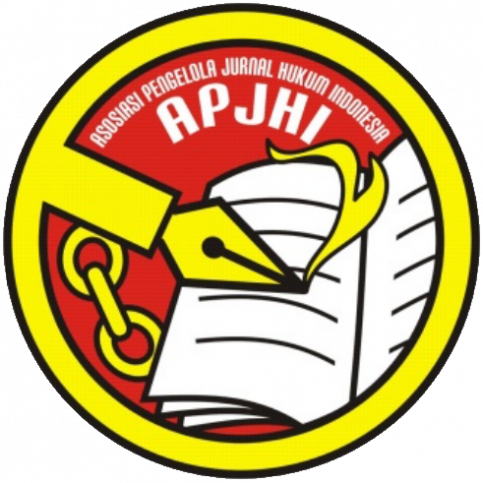Ada Apa Dengan SKMHT?
Keywords:
Notaris, Kewenangan, Surat Kuasa Membebankan Hak TanggunganAbstract
Notary authority in making the power of attorney imposing Collateral Right (SKMHT) made under the Notarial deed based on Article 96 paragraph (1) of the Regulation of the Head of Land Board No.8/2012 related to Article 38 of Law on Notary Position No.30/2004 (UUJN) is a problem which is, in practice, faced by Notary/Land Certificate Issuing Officer in performing his/her duty as a Public Official making and issuing authentic deed. The SKMHT made under the notarial deed should be regulated in Article 38 of of Law No. No.30/2004 (UUJN) not in Article 96 paragraph (1) of the Regulation of the Head of Land Board No.8/2012 which regulates te authentic deed for the Land Certificate Issuing Officer (PPAT). The deed of SKMHT is not a guarantee institution like the existing guarantee institution but only a Power of Attorney (Authentic) from the debtor /guarantor to the creditor/collateral receiver in a series of early process of the implementation of Collateral Right binding on the object of credit collateral such as a plot of land, therefore, the position of SKMHT deed has not yet had an executorial power on the land/the collateral object. Research methodology in this research is normative juridical research method with statute approach and case approach. The law substances include primary, secondary and tertiary law substance.The result of this study showed that the SKMHT made under the Notarial deed which should be regulated and object to Article 38 of Law No. No.30/2004 (UUJN) was not realized because the Office of National Land Board (BPN) will not process the SKMHT with this provision, except SKMHT uses the format in accordance with the condition in Article 96 paragraph (1) of the Regulation of the Head of Land Board. T using blank SKMHT, then the Notary has acted outside his authority, so the SKMHT does not have proof power as an authentic deed in protect the rights of creditors.
Downloads
References
Adjie, Habib, Sekilas Dunia Notaris dan PPAT Indonesia, Bandung : CV. Mandar Maju, 2009.
___________, Telaah Ulang, Kewenangan PPAT untuk membuat Akta, bukan mengisi Blanko/Formulir Akta, Jakarta : Renvoi 8.44, 2007.
__________ , Akta PPAT bukan Akta Otentik, Jakarta : Renvoi 10.46, 2007.
Budiono, Herlien, Kumpulan Tulisan Hukum Perdata di Bidang Kenotariatan. Bandung : PT. Citra Aditya Bakti, 2007.
Badrulzaman, Mariam Darus, Beberapa Permasalahan Hukum Hak Jaminan, Artikel dalam Jurnal Hukum Bisnis, Volume 11 : Jakarta :Yayasan Pengembangan Hukum Bisinis, 2000.
Bruyn Mgz, J. De, dalam Tan Thong Kie, Studi Notariat dan Serba-serbi Praktek Notaris, Jakarta : Ichtiar Baru van Hoeve, 2007.
Fuady, Munir, Hukum Pailit dalam Teori dan Praktek, Edisi Revisi (disesuaikan dengan UU No. 37 Tahun 2004), Cet. III, Bandung : Citra Adtya Bakti, 2005.
Lotulung, Paulus Effendie, 2004, Pengertian Pembuktian Secara Sederhana Dalam Kepailitan, Majalah Ombudsman, No. 54/Th.V/Mei.2004.
Nurhayati, Irna, 1999, Tinjauan Terhadap Undang-Undang Kepailitan (UU No. 4 Tahun 1998), Mimbar Hukum Majalah Berkala Fakultas Hukum UGM No : 32/VI/1999.
Rahmi, Elita, 2016, “Wajah Baru†PPAT Dalam Proses Pendaftaran Tanah di Indonesia (Studi PP Nomor 24 Tahun 2016 tentang Perubahan PP Nomor 37 Tahun 1998 Tentang PPAT), Jurnal Notariil, Vol. 1, No. 1, November 2016, 1-18.
Simamora, Y. Yoga, 2001, Catatan Terhadap Undang-undang Nomor 4 Tahun 1998 Tentang Kepailitan, Majalah Hukum Yuridika, Volume 16 No. 1 Januari
Downloads
Published
Versions
- 2020-01-31 (1)
- 2020-01-31 (1)
How to Cite
Issue
Section
License
The Authors(s) retain copyrights of the Article published on Recital Review. However, before publishing, it is required to obtain written confirmation from Author(s) in order to ensure the originality (Author Statement of Originality). The statement is to be signed by at least one of the authors who have obtained the assent of the co-author(s) where applicable. This work licensed under a Creative Commons Attribution 4.0 International License). All writings published in this journal are personal views of the authors and do not represent the views of this journal and the author's affiliated institutions.Â






